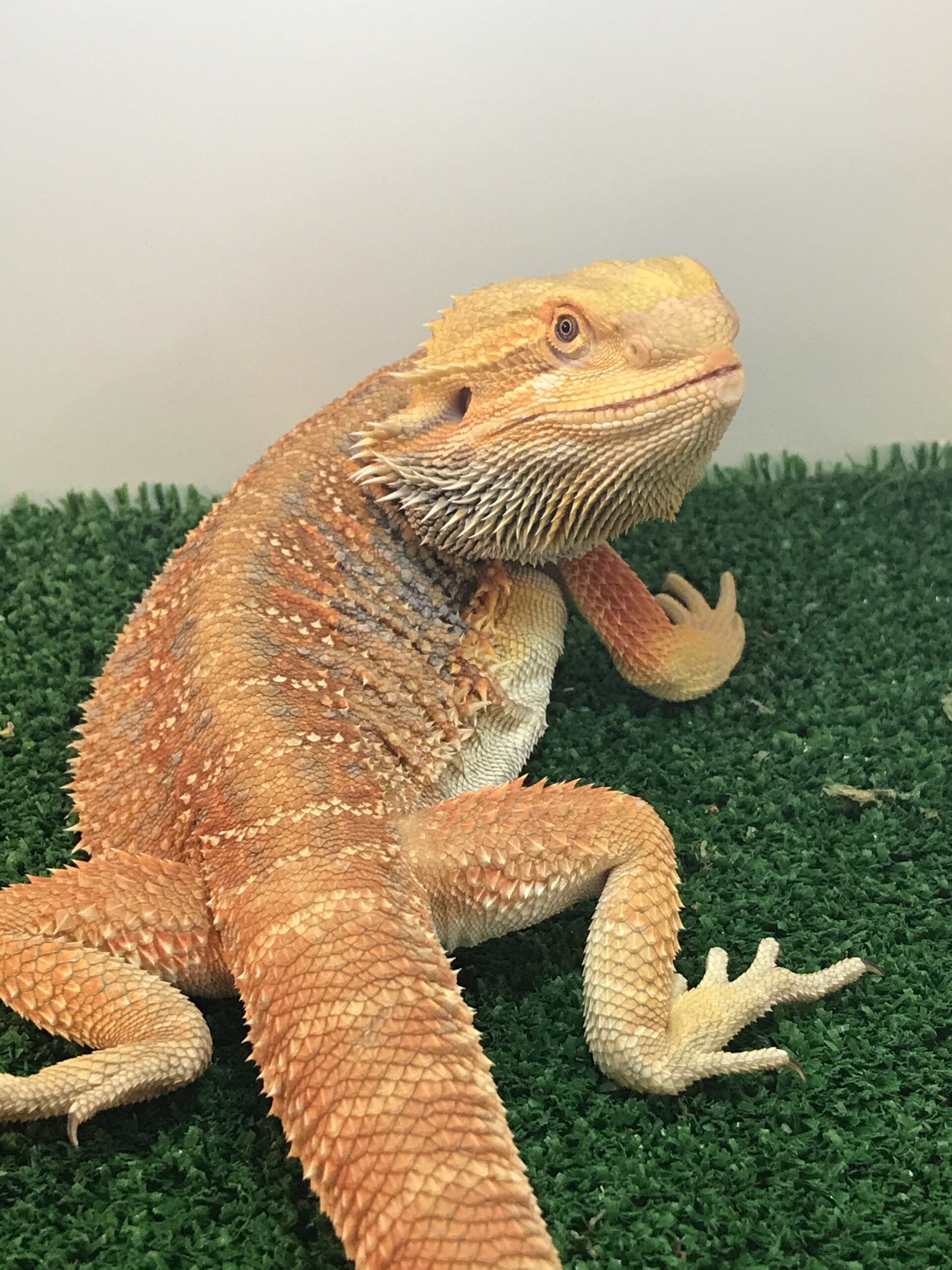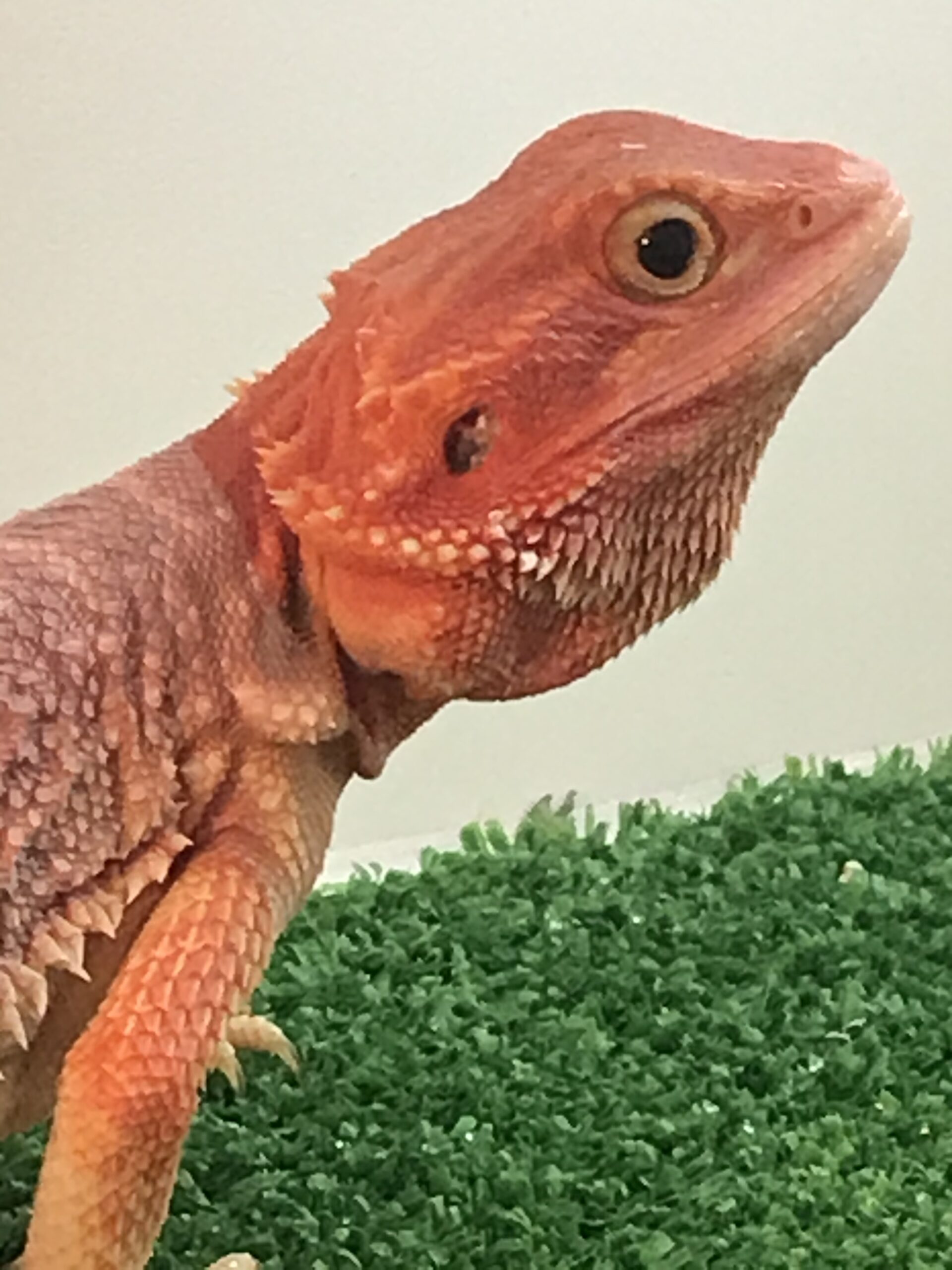Natural History
Bearded dragons are agamid lizards belonging to the genus Pogona . There are seven species of which the most common in the pet trade is the P. vitticeps, the inland or central bearded dragon is the most widely available.
Bearded dragons live in the arid, rocky, semi-desert regions. They are adept climbers, spending time on branches and in bushes; they also bask on rocks and exposed branches in the mornings and afternoons.
These diurnal lizards are omnivores, voracious eaters of invertebrates and small vertebrates alike. They also forage for soft plant matter, including greens, fruits, and flowers. Like most desert dwellers, bearded spend the hottest part of the day in underground burrows and are well adapted to the cool desert nights.
Housing
Despite their relatively modest size (adults grow up to 21 inches [54 cm]), Bearded Dragons are still considered by many to be a “giant” lizard and require generous space. There are many types of cages that can be used to house your bearded dragons – , glass terrariums, melamine cages, PVC cages, etc.
As adults, bearded dragons will cheerfully eat animals smaller than themselves. Hatchlings should not be housed with juveniles or adults. Males tend to be territorial, Overcrowding, too, can lead to aggression and stress, making even 50-gallon tanks too small for them. Our bearded dragons are housed in custom melamine cages 2 X 4 x 16 inches high, with adequate ventilation and sliding glass door panels , and a couple of light sources.
An enclosure should be large enough to provide a wide temperature gradient both horizontally and vertically. Tanks must be well-ventilated, yet able to retain heat. Tanks with parts of their top or sides made of screen often work well. Make sure the tank top is large enough and sturdy enough to hold a full-spectrum/UV light and a fixture for supplemental heating.
There is some debate about the best substrate. In their native environment, bearded dragons live in sandy desert areas. Decomposed granite or large grained sand is often used, though there have been reports of intestinal impaction. Other substrates include gravel and aquarium rock (which are more difficult to clean and disinfect), outdoor carpeting (trim loose threads), butcher paper, unprinted newsprint, paper towels and terry towels all make suitable substrates,

I’ve purchased from Frank several times at shows in Westchester. Every transaction was flawless and the animals were all top notch. I can’t recommend Rhegal Dragons enough.
W. Tindelson
I was interested in buying a second bearded dragon and Rhegal Dragons had so many to choose from. I would definitely check out their inventory as they have an endless amount of beardies. Can’t thank them enough!
Carlos S.Heat
The temperature gradient during the day should range from 76-84 F (24 C) on the cool side, 86-95 F (30 C) on the warm side, with a basking area ranging from 90-100 F (32-37.7 C). Night time temperatures can drop no lower than the low to mid 70s (21 C) on the cool side. An under tank heating pad under the warm side of the tank will gently heat the substrate
Light
Bearded need daily access to a UVB source, either being regularly exposed to direct sunlight, or to UVB-producing fluorescent tube such as, Zoo MEd’s, or Reptisun lights (5.0 to 10.0 +) or similar UVB-producing fluorescent tube. Incandescent lights, while suitable for use as heat sources, do not provide the full spectrum required by reptiles, including no UVA and never any UVB.
Never use a white light of any sort at night, for lighting or for heat. This will stress your animal, eventually affecting its ability to thrive through the resultant lack of sleep, loss of appetite, and other stress-related symptoms.
Water
Always provide fresh water for your dragon. It should be in a bowl or dish shallow enough for your lizard to see easily into and drink out of; deeper bowls can be half-sunk into the substrate. Your bearded will enjoy a shower now and then: a light misting with water will also help keep the skin humidified to make it easier to shed.
Food
The bearded dragons are omnivores, with plant foods comprising about 20 percent of their diet. Since these lizards consume a wide variety of invertebrates and small vertebrates in the wild, a variety of protein sources must be offered in captivity. Prey items such as appropriately sized cultured crickets, cockroaches, mealworms, king worms, and wax worms can be fed, along with pinkie mice
Feed your invertebrate, before feeding your dragon. Prey bought from pet stores is generally in dire need of a good meal, having subsisted on cardboard or bran for several days at least. Sprinkle or dust prey with a calcium supplement just before feeding them to your lizard 3-5 times a week (more for baby and pregnant dragons), and use a multivitamin supplement 2-3 times a week (more for babies and pregnant females Plant matter includes a variety of shredded or torn vegetables and fruits such as green beans, orange-fleshed squash, carrots, escarole, parsley, kale, mustard, dandelion and collard greens,
67 Gallon Aquarium – Click HERE
Heat Pad – Click HERE
Basking Light Kit – Click HERE
UV Lights – Click HERE
Crickets – Click HERE
Mealworms – Click HERE
Calcium Dust – Click HERE
